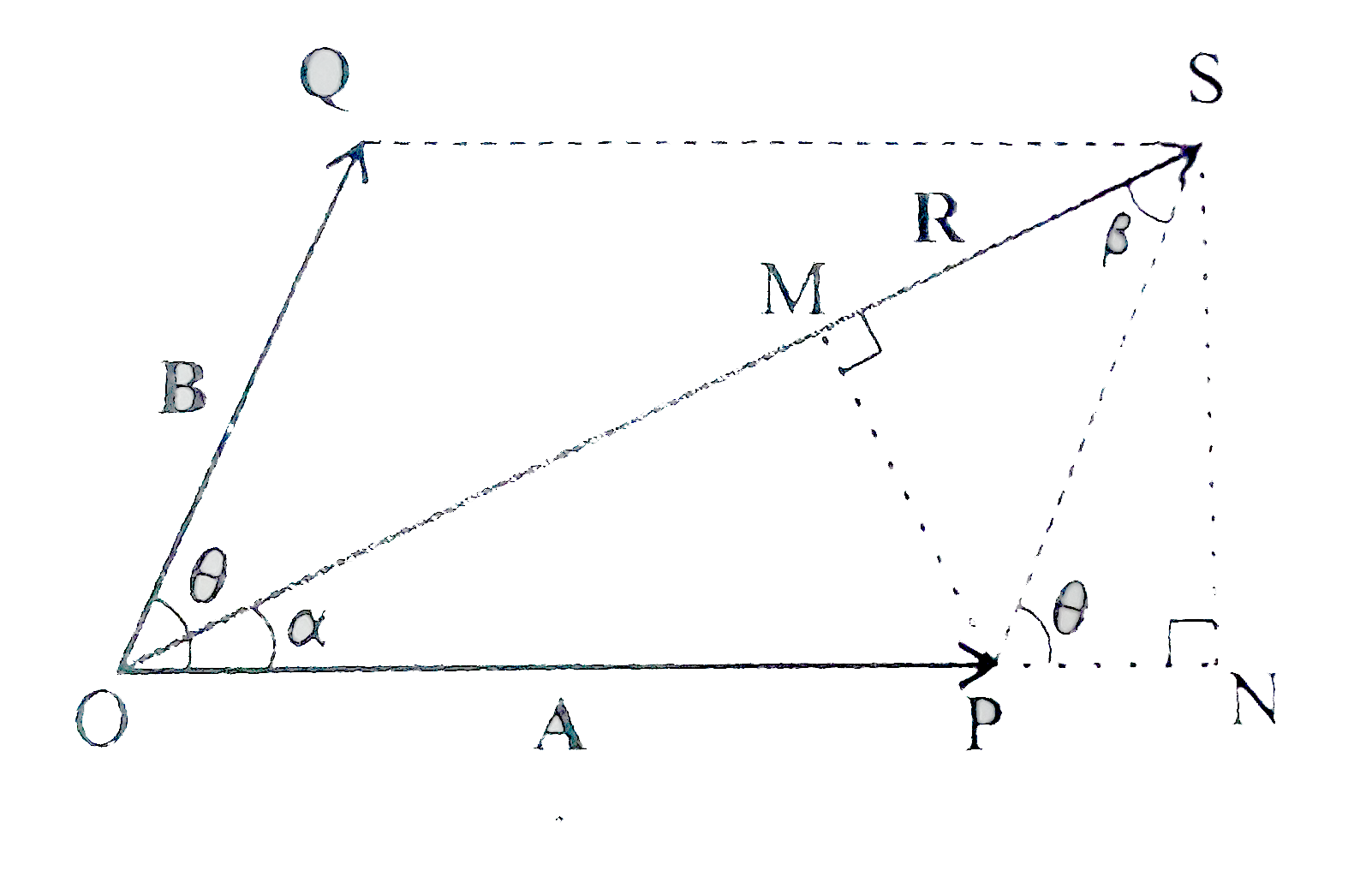Find the magnitude and direction of the resultant of two vectors A and B in terms of their magnitudes and angle θ between them .
 Solution in Kannada
Solution in Kannada
Let OP and OQ represent two vectors A and B making an angle θ (Fig . 4.10) . Then , using the parallelogram method of vector addition , OS represents the resultant vector R:
R = A+B
SN is normal to OP and PM is normal to OS . From the geometry of the figure,
OS2=ON2+SN2
but ON=OP+PN=A+Bcosθ
SN=Bsinθ
OS2=(A+Bcosθ)2+(Bsinθ)2
or , R2=A2+B2+2ABcosθ
R=√A2+B2+2ABcosθ
In ΔOSNSN=OSsinα=Rsinα,and
in ΔPSN,SN=PSsinθ=Bsinθ
Therefore , Rsinα=Bsinθ
or Rsinθ=Bsinα
similarly
PM=Asinα=Bsinβ
or Asinβ=Bsinα
or Combining Eqs . (4.24b) and (4.24c),we get
Rsinθ=Asinβ=Bsinα
Using Eq . (424a).
or , tanα=SNOP+PN=BsinθA+Bcosθ
Equation (4.24a) gives the magnitude of the resultant and Eqs . (4.24e) and (4.24f) its direction. Equantion (4.24a) is known as the Law of cosines and Eq . (4.24d) as the Law of sines.

Similar Questions
If magnitude of the resultant of two vectors equal of magnitude, is equal to the magnitude of either of the vectors, what is the angle between them ?
View SolutionFind the magnitude and direction of the resultant of two vectors A and B in the terms of their magnitudes and angle θ between them.

View SolutionTwo vectors having equal magnitudes A make an angle θ with eahc other. Find the magnitude and direction of the resultant.
View SolutionIf magnitude of the resultant of two vectors equal of magnitude, is equal to the magnitude of either of the vectors, what is the angle between them ?
View SolutionFind the magnitude and direction of the resultant of two vectors vecA and vecB in terms of their magnitudes and angle between them.
View SolutionFor two vectors →A and →B are acting at a point with an angle α between them, find the magnitude and direction of the resultant vector.
View SolutionA parallelogram law helps to find the magnitude and direction of the resultant of two forces. If the magnitude of two vectors and their resultant are the same, what is the angle between the two vectors?
View SolutionTwo vectors having equal magnitudes A make an angle θ with each other. Find the magnitude and direction of the resultant.
View Solution

